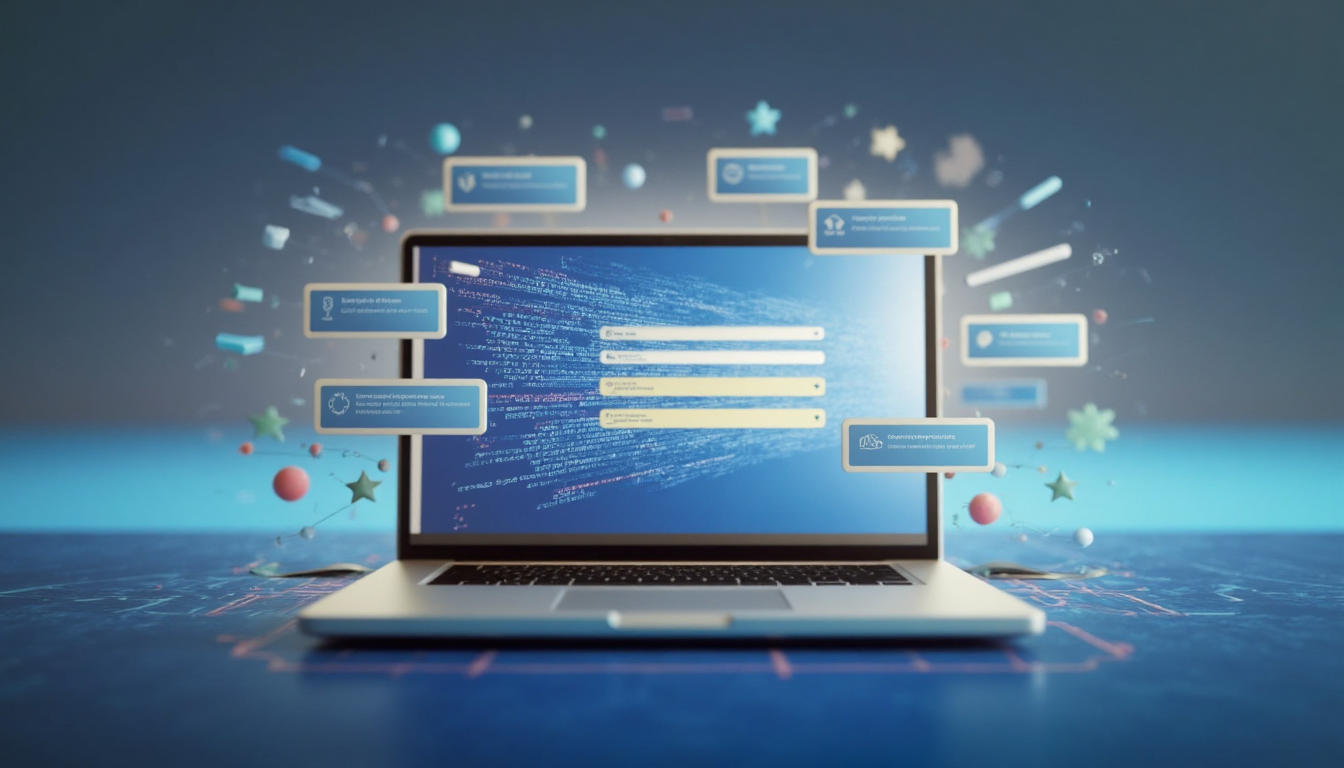How Manual Threat Modeling Slows Down Enterprise Security and Development

How long does it take your security team to complete a threat model? Days? Weeks? Meanwhile, your developers are waiting, and deadlines are getting pushed to a different day over and over again.
The problem has everything to do with the way most businesses are doing threat modeling. Traditional and manual threat modeling is too slow for modern enterprises. It drains resources and frustrates both security and development teams.
But just so you know, the solution is available to you. AI-powered threat modeling is changing the game. It’s faster, more scalable, and actually helps security teams keep up with development instead of slowing it down.
Table of Contents
- The Problem with Manual Threat Modeling
- How AI-Powered Threat Modeling Solves These Issues
- AI + Human Expertise for Effective Threat Modeling
- Enterprises Needs More Than Manual Threat Modeling
The Problem with Manual Threat Modeling
Threat modeling is supposed to help you identify security risks early. But when it’s done manually, it often does the opposite. It slows down development, creates inconsistencies, and leaves security gaps. Enterprises that rely on manual threat modeling struggle to keep up with fast-moving development teams and make security a problem instead of a built-in advantage.
- Manual threat modeling takes too long and drains resources
Security teams spend weeks manually analyzing system architectures, attack vectors, and security controls. And this happens while developers are waiting, or worse, moving ahead without security input. This slows development cycles, delays releases, and increases costs. The longer it takes to complete a threat model, the harder it becomes to fix issues before deployment.See how SecurityReview.ai reduces threat modeling time from weeks to hours with AI-powered automation in our Time-Saving Feature.
For teams looking to build foundational skills in secure threat modeling, explore the Threat Modeling Learning Path from AppSecEngineer.
- Human error makes manual threat modeling unreliable
Threat models depend on the expertise of individual analysts. Different teams produce different results that typically lead to inconsistencies. Fatigue and oversight mean critical threats can be missed, which creates security gaps that attackers can exploit.
- Manual processes can’t keep up with Agile and DevSecOps
Development moves fast, but manual threat modeling is slow. Security reviews happen late in the SDLC, which forces teams to go back and rework code. Manual methods don’t scale with CI/CD pipelines, and makes security more of a problem instead of an advantage.If you're struggling to integrate security reviews into fast-moving development, you may also benefit from a Security Architecture Review by we45 to assess scalable design and threat coverage.
- Compliance requirements turn into bottlenecks
Enterprises need to meet strict security and compliance standards like ISO 27001, PCI DSS, HIPAA, and NIST 800-53. But manually documenting and reviewing threat models slows down audits, increases compliance risks, and makes passing security assessments a constant struggle. The more time spent on compliance paperwork, the less time security teams have for proactive threat mitigation.
How AI-Powered Threat Modeling Solves These Issues
Manual threat modeling is too slow, inconsistent, and difficult to scale. AI-powered threat modeling changes that by automating risk identification, improving accuracy, and integrating directly into modern development workflows. And enterprises that adopt AI-driven threat modeling are ahead of their competitors because of how much faster they can release secured products while maintaining stronger compliance with less effort. Here’s how these companies are benefiting from AI:
- AI automates threat identification in real time
What if instead of security teams manually reviewing architectures and attack vectors, AI took over in scanning code, configurations, and system architectures for vulnerabilities in real-time? This reduces the time required for security assessments from weeks to hours so that your teams can detect and fix risks before they become major problems.
- AI standardizes threat modeling and improves accuracy
AI models follow structured security frameworks like MITRE ATT&CK, STRIDE, and NIST 800-53 to guarantee consistency across all threat models. By removing subjective bias and human error, AI provides more reliable and repeatable results to get enterprises a clear and consistent view of their security risks.
- AI integrates with DevSecOps for continuous security assessment
AI-powered threat modeling integrates directly with CI/CD pipelines, static application security testing (SAST), dynamic application security testing (DAST), and software composition analysis (SCA) tools. This enables real-time risk scoring, automated security policy enforcement, and contextual threat insights for both security and development teams. And with AI-generated threat models, it becomes easier to provide instant feedback within IDEs, Git repositories, and security dashboards to the developers who are working on mitigating risks before deployment.
- AI streamlines compliance enforcement and audit readiness
By generating real-time compliance reports, audit logs, and security posture summaries, AI reduces manual documentation efforts and ensures continuous compliance validation. Enterprises can instantly generate evidence for audits and proactively find compliance gaps before they become regulatory issues.
- AI accelerates security, but human oversight remains essential
While AI dramatically improves efficiency, accuracy, and scalability, expert security teams are still necessary for validating AI-generated threat models, interpreting complex attack scenarios, and making risk-based decisions. Enterprises should combine AI automation with human expertise to enhance security posture, minimize false positives, and align threat modeling with business risk management strategies.
AI + Human Expertise for Effective Threat Modeling
AI-powered threat modeling makes things easier, but it’s not a replacement for human expertise. While AI can analyze architectures, detect threats, and provide real-time security insights in record time, it still lacks context, critical thinking, and the ability to assess business risk. Security teams are needed to validate AI-generated findings, prioritize real threats, and refine models to align with real-world attack scenarios.
The most effective approach is AI-augmented security teams, where AI handles automation and scale, while human experts apply risk intelligence, strategic decision-making, and adversarial thinking. This combination guarantees that enterprises can move fast, stay secure, and adapt to new threats without compromising accuracy or control.
Enterprises Needs More Than Manual Threat Modeling
Manual threat modeling is too slow, inconsistent, and not ready to scale with your business. It creates bottlenecks, increases security risks, and makes compliance more difficult. Enterprises that rely on outdated processes will find it hard to keep up with the speed of today’s threats and development cycles.
AI-powered threat modeling like SecurityReview.ai automates risk identification, enforces accuracy with structured frameworks, and integrates seamlessly into DevSecOps workflows. It reduces assessment time from weeks to hours, improves compliance readiness, and ensures security doesn’t slow down innovation.
See how AI-driven threat modeling can transform your security strategy, schedule a demo with SecurityReview.ai today.
FAQ
What is AI-powered threat modeling?
AI-powered threat modeling is the automation of security risk identification using machine learning, predefined security frameworks (MITRE ATT&CK, STRIDE, NIST 800-53), and real-time analysis of code, configurations, and architectures. It replaces slow, manual threat modeling with faster, scalable, and more accurate security assessments.
How does AI improve threat modeling compared to manual methods?
AI improves threat modeling by automating risk detection, ensuring consistency, and integrating with DevSecOps workflows. Unlike manual threat modeling, which is time-consuming and prone to human error, AI continuously analyzes attack vectors, misconfigurations, and compliance gaps, reducing security review times from weeks to hours.
Can AI-powered threat modeling integrate with CI/CD pipelines?
Yes, AI-powered threat modeling integrates with CI/CD pipelines, static and dynamic security testing tools (SAST, DAST), and cloud security platforms. This allows for continuous security assessments, automated risk scoring, and instant feedback for developers to fix vulnerabilities before deployment.
Does AI-powered threat modeling replace security teams?
No, AI enhances security operations but does not replace human expertise. Security teams still play a crucial role in validating AI-generated findings, prioritizing risks, and applying business context. AI handles automation and scale, while security teams focus on strategic decision-making and advanced threat analysis.
How does AI help with compliance requirements like ISO 27001, PCI DSS, and HIPAA?
AI automates compliance checks by mapping security risks, vulnerabilities, and controls against industry standards like ISO 27001, PCI DSS, HIPAA, and NIST 800-53. It generates real-time compliance reports, audit logs, and policy enforcement recommendations, reducing manual documentation efforts and ensuring continuous compliance monitoring.
What are the main challenges of adopting AI-powered threat modeling?
The biggest challenges include integration with existing security tools, tuning AI models for specific business risks, and ensuring security teams trust AI-generated insights. Enterprises need to combine AI automation with expert validation to achieve accurate and actionable threat modeling results.
What industries benefit the most from AI-powered threat modeling?
Industries with strict security and compliance requirements benefit the most, including financial services, healthcare, cloud computing, government, retail, and industrial IoT. AI-powered threat modeling helps these industries detect risks earlier, improve compliance, and accelerate secure software development.







.png)
.png)
.png)





